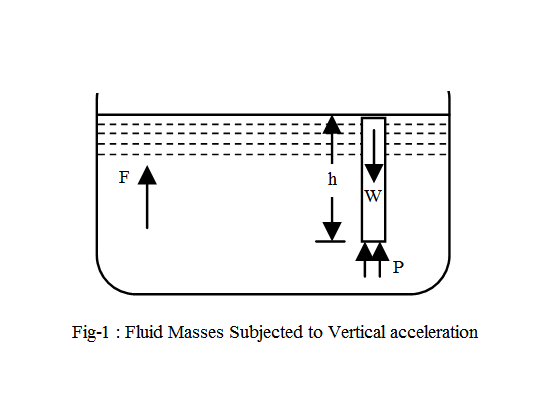Accelerated vertically
Fluid masses subjected to vertical acceleration
Contents
Overview
Consider a tank open at top, containing a liquid and moving vertically upwards with a uniform acceleration. Since the tank is subjected to an acceleration in the vertical direction only, therefore the liquid surface will remain horizontal.
Example:
[metric]
Example - Fluid masses subjected to vertical acceleration
Problem
An open rectangular tank 4m long and 2.5m wide contains an oil of specific gravity 0.85 up to a depth of 1.5m. Determine the total pressure on the bottom of the tank, when the tank is moving with an acceleration of of g/2 m/s2 (i) vertically upwards (ii) vertically downwards.
Workings
Given,
 Intensity of pressure at the bottom of the tank,
Intensity of pressure at the bottom of the tank,
)
)
 Total pressure on the bottom of the tank,
Total pressure on the bottom of the tank,
&space;=&space;187.65\;KN) (i) Total pressure on the bottom of the tank, when it is vertically downwards
Intensity of pressure at the bottom of the tank,
(i) Total pressure on the bottom of the tank, when it is vertically downwards
Intensity of pressure at the bottom of the tank,
)
)
 Total pressure on the bottom of the tank,
Total pressure on the bottom of the tank,
&space;=&space;62.55\;KN)
= 4 m
= 2.5 m
= 1.5 m
= g/2 m/s2
- Specific gravity of liquid = 0.85
 Login
Login

